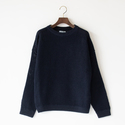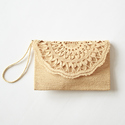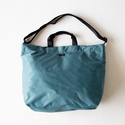- トップページ/
- Home/
- Stationary/
- BLAKC PA WOOD OVAL DISH
BLAKC PA WOOD OVAL DISH
A new form of bent-wood
The Blanc Pa dishes have a unique gradation and contrast of cedar created by nature, and each one has its own unique character. Odate Kogeisha, which has been making bento boxes since its founding in Odate, northern Akita Prefecture, created this series after much trial and error to make use of the sirata (the young white part outside the annual rings) of trees, which are difficult to use in crafts because of their large shrinkage rate and tendency to rot.
The "Blanc" in "Blanc Pa" means "white" in French. These dishes, made using the sirata part, are filled with a special feeling for "white".
For your daily dining table
"Blanc Pa/Dish" allows you to experience the warmth of wood that has been nurtured over many years in the climate and environment of northern Tohoku, and the original character and beauty of cedar. Not only is it beautiful to look at, but it is also easy to use. It is coated with urethane paint, so it can be used for dishes with a lot of water and oil, such as sauces. It can be used for a wide range of purposes, from pasta to rice bowls and stews.
Two sizes are available, S and M. The S size is just the right size for a single serving plate or for small snacks. The M size is just the right size for serving snacks such as cheese and ham, sashimi, and side dishes. It will make your table a little more luxurious than usual, whether Japanese or Western, and it is surprisingly light and easy to lift, so you can use it without stress at the daily dinner table. And the Blanc Pa/Oval Dish is also great for storage. Both sizes are stackable and can be stored on top of each other.
In addition to using it to serve food, it is also recommended to use it as a small storage box to neatly organize tools that tend to get scattered on the desk, such as pens, sticky notes, and clips, or to display and store accessories.
A lifetime product with just a little care
Magewappa are made by craftsmen who carefully complete each step of the process: boiling the cedar, bending it, binding it, and sewing it. It is a simple yet carefully made bent product. The well-polished cedar wood is smooth to the touch even after time has passed. I feel that materials created by nature can be so familiar with life. Magewappa are often thought of as difficult to use, but by following the instructions for use, it can be transformed from a "difficult tool to use" to a "convenient and useful tool."
Another feature of Akita cedar is that it has a sterilizing effect, and since the surface is well coated, it can be kept clean without liquids soaking in or rice grains sticking to it. To clean up, use a sponge to remove dirt with lukewarm water, then pour hot water over it. Wipe off the moisture and dry it upside down. You can also stand the wappa on a small cup so that the bottom can circulate. The secret to using it for a long time is to dry it out completely before storing it. Be careful not to expose it to direct sunlight. It can crack due to sudden changes in temperature. If you take care of it with the basic care, it will be a tool that will be with you for a long time, so we hope you will enjoy using it while enjoying the color changes that occur over time.
Traditional crafts that utilize the power of nature
Akita cedar that has endured harsh winters has a beautiful luster, and the bent wappa made by bending it is said to be exquisite and will not warp over the years. Magewappa are made from natural Akita cedar trees that are 150 to 200 years old. They are not only durable, but also keep the rice cool in summer and warm in winter. They are a traditional Akita craft that makes the most of the power of nature. Akita cedar absorbs the moisture from the rice as if it were breathing, and by maintaining the right amount of moisture, the rice packed in the wappa becomes especially delicious.
The history of magewappa is long, and it is said to date back to the Nara period. It is said that it began when a lumberjack made a lunch box by bending raw cedar wood and sewing it with cherry bark. The production of Odate magewappa became popular about 400 years ago. In 1980, it was designated as a national traditional craft. There are various types of magewappa all over Japan, but only Odate magewappa is designated as a traditional craft, and its excellent technique is highly regarded.
| Size | S:
Width: 20cm Depth: 9cm Height: 3cm M: Width: 25cm Depth: 9cm Height: 3cm |
| Capacity | S:330ml
M:420ml |
| Weight | S:60g
M:80g |
| Material | Akita cedar / matte urethane finish |
| Country of origin | Japan |
| Gift box | This product would be packaged in a gift box. |
| Compatibility | Microwave: x Dishwasher: x Oven: x |
Feature of product
- - This vessel utilizes the natural appearance gradation of cedar.- Stackable and can be stacked for storage.- The urethane coating allows for the placement of sauces and other moist or oily dishes.
Notice
-
-Urethane paint complies with the Food Sanitation Act.
-Because it is handmade by craftsmen, there may be slight errors in the size.
-Because natural wood is used, the color may differ from the photo.
-Please avoid soaking in water for a long time as it may cause warping, distortion, and cracking.
-Since cedar products are very soft, please avoid using metal cutlery, etc. as much as possible.
-Places exposed to direct sunlight or strong lighting for a long time may cause warping, distortion, cracking, and sunburn.
-Please note that pouring hot water for a long time may cause discoloration and cracking.
-After washing, wipe off the water with a soft cloth and dry thoroughly.
-After use, please use a sponge or cloth. Please avoid alkaline detergents, chlorine bleach, scrubbing brushes, metal scrubbing brushes, and cleansers.
-Please note that curry, red wine, coffee, etc. may stain with strong pigments.
よみもの|世界で一つだけの器、大館工芸社のBlanc Paシリーズ。制作秘話から愛用レビューまで、詳しく迫ります。
ブランド紹介
ODATE KOUGEISHA
The craftwork, Mage-Wappa, has started its history in the Nara period (A.D. 710 to 794). It is said that a woodcutter bent a cedar wood and made a container sewn with cherry tree bark. In Odate city of Akita prefecture, the production of Mage-Wappa started about 400 years ago, and Mage-Wappa produced in Odate city was designated as a national traditional craft in 1980. Mage-Wappa is made through the process of boiling Akita-sugi, bending, binding, and sewing. The well-grounded Akita-sugi becomes amazingly smooth, durable and clean products.
| 商品 | 価格(税込) | 在庫 | 個数 | |
|---|---|---|---|---|

|
¥6,050(税込) |
△
残り2点 |
||

|
¥7,150(税込) |
◯
|
Added to cart
Blanc Pa/Oval Dishには、他にもこんな仲間がいます
-
ODATE KOUGEISHA
OSUGI WARABE SET¥10,010〜(税込)
-
ODATE KOUGEISHA
BLAKC PA WOOD DISH¥5,500〜(税込)
-
ODATE KOUGEISHA
BLAKC PA WOOD BOWL¥6,600〜(税込)
-
ODATE KOUGEISHA
ROUND DOUBLE BENTO BOX¥10,450(税込)
-
ODATE KOUGEISHA
OVAL LUNCH BOX SMALL¥9,350〜(税込)
-
ODATE KOUGEISHA
OVAL WAPPA LUNCH BOX WITH URUSHI COATING¥14,300〜(税込)
-
ODATE KOUGEISHA
TWO-LAYER YAGURA BENTO BOX¥14,300(税込)
-
ODATE KOUGEISHA
MICHI BENTO BOX¥12,100(税込)
-
ODATE KOUGEISHA
TWO-LAYER WAPPA LUNCH BOX¥13,200(税込)
-
ODATE KOUGEISHA
SOBA PLATE¥6,600(税込)
-
ODATE KOUGEISHA
SOBA CHOKO¥3,300(税込)
Blanc Pa/Oval Dishを見た人はこんなアイテムも見ています
-
Magno
Tape dispenser¥2,926(税込)
-
LAMY(ラミー)
LAMY noto ballpoint pen¥2,200(税込)
-
丸川商店(マルカワショウテン)
Ten year diary¥7,700(税込)
-
Magno
Loupe round¥2,926(税込)
-
FUTAGAMI
JAPAN DELIVERY ONLY Stationery tray¥3,355〜(税込)
-
marumasu
ZABUTON CUSHION CIRCLE¥9,350(税込)
-
ponpindo
BESPOKE ZABUTON CUSHION¥7,920(税込)
-
marumasu
ZABUTON CUSHION RECTANGLE¥6,050(税込)
-
MASUHISA SOMEORI KENKYUSHO
Throstle Spinning Socks¥2,310(税込)
-
BUNACO
BUNACO Oval tray¥8,800(税込)
-
SONOBE
Wooden bowl zelkova¥3,850〜(税込)
-
TAKAHASHI KOUGEI
KAMI Wooden Glass¥3,520〜(税込)
-
Studio Aizawa
Drainer basket¥12,100(税込)
-
HAKUSAN PORCELAIN
S-type soup bowl set of 2¥7,040(税込)























%20MILK.jpg)












.jpg)


































.jpg)










.jpg)

.jpg)




















































































